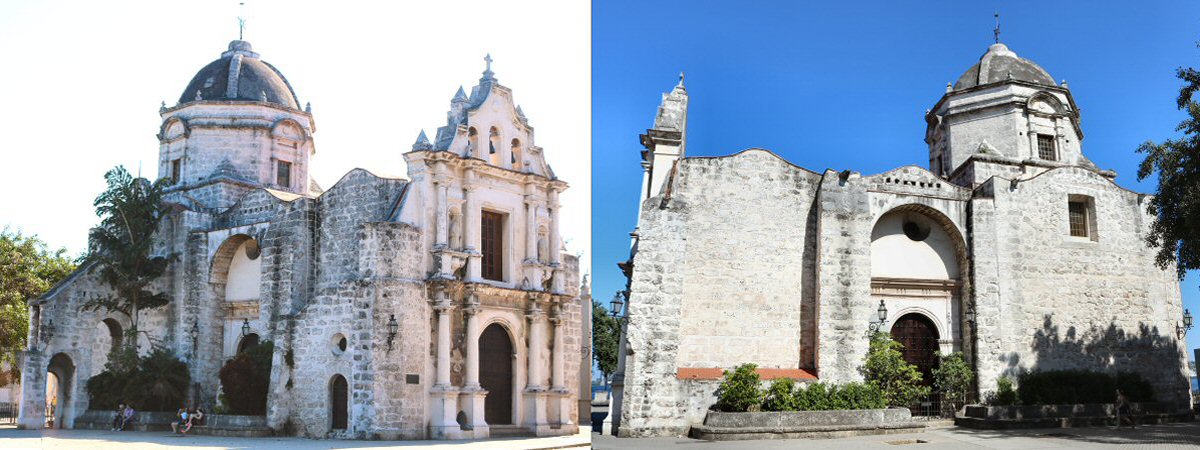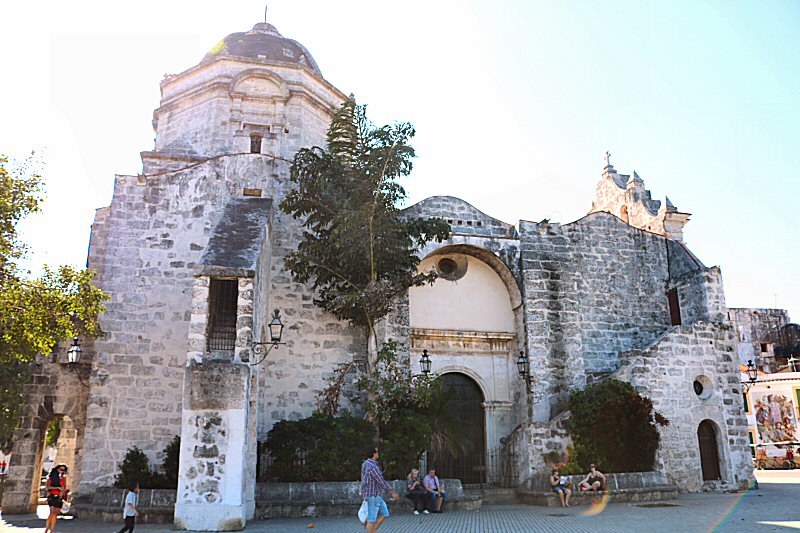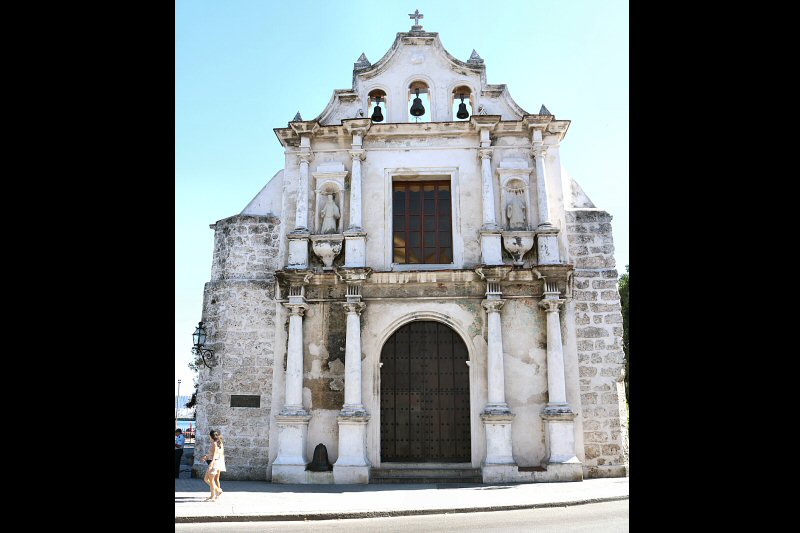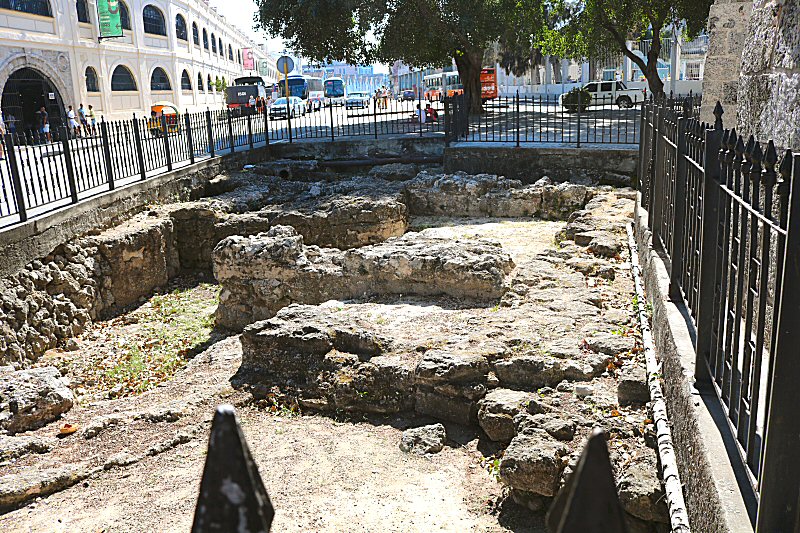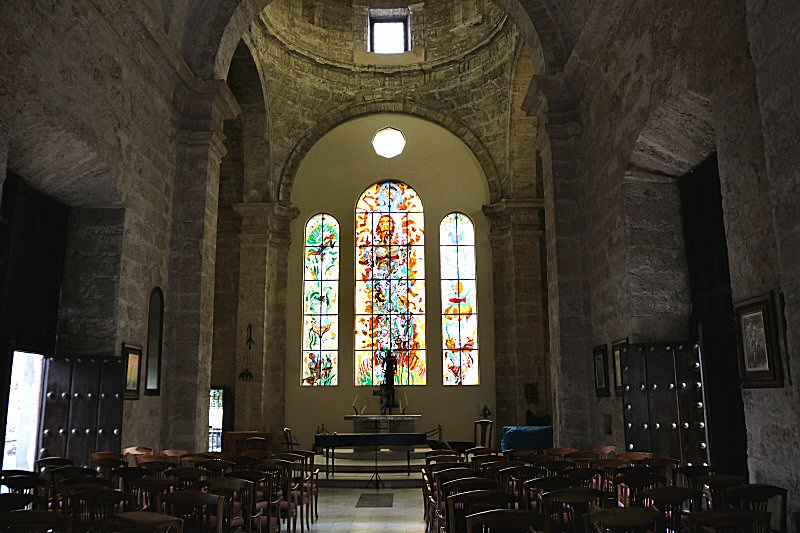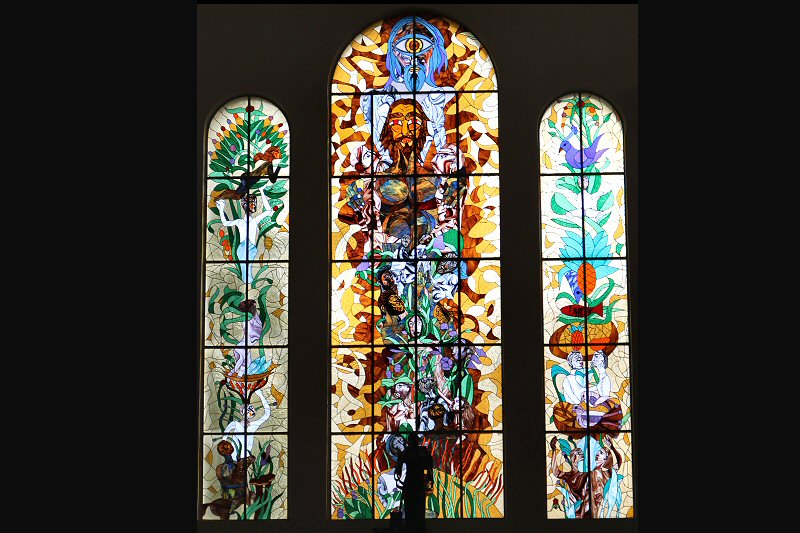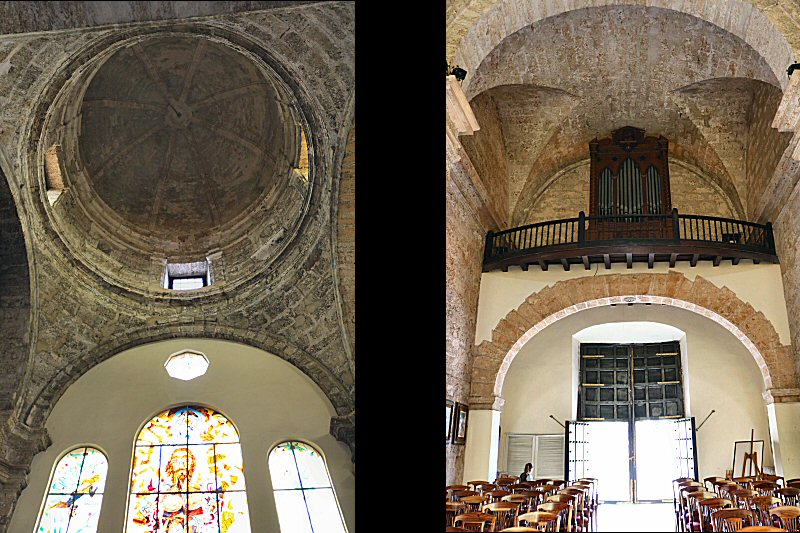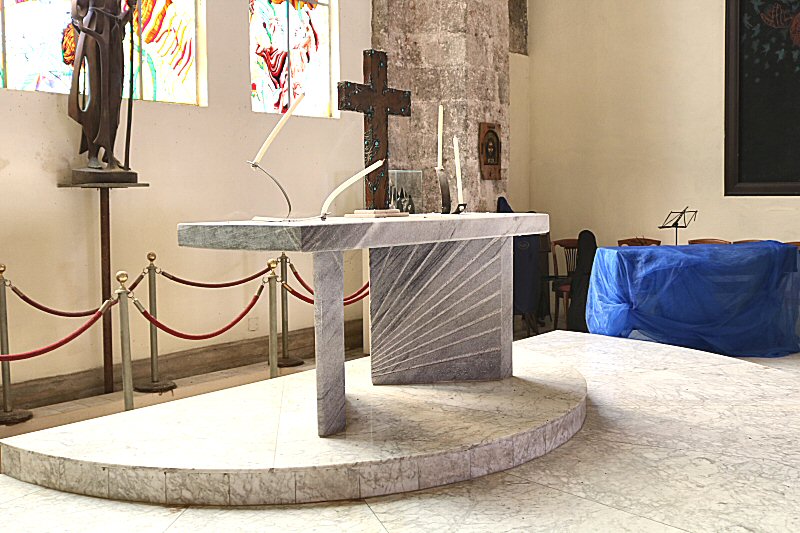
The Iglesia de San Francisco de Paula is
located at the southern end of the Alameda de Paula, between the
Avenida San Pedro and the Avenida del Puerto (Desamparados).
The construction of the Iglesia de San Francisco de
Paula was initiated by the patriarchy of the Basilica Menor de San Francisco
de Asís in 1668. In fact, its construction was the thought of Nicolás
Estévez Borges, the Dean of the Cathedral of Santiago de Cuba and then the
Beneficiary Rector of the Catholic church, named Parochial Mayor. His will
of the construction of a chapel devoted to Saint Francis of Paola (founder
of the Roman Catholic Order of the Minims) in the neighborhood of Campeche
and a hospital for women, is discovered in his letter that he wrote one year
before he passed away in 1665. The building would serve as
the chapel of a hospital for poor and homeless women.
Although the construction began in 1668, it is still unknown when the
building was completed. In 1602 Havana could get over an epidemic disease;
thus, the legend grew that the epidemy would have ravaged the town, if it
would not intervened and halted by the Saint Francis de Paula miraculously.
The building was a wooden construction, so that it
could not resist the hurricane in 1730, and it was destroyed completely. The
hermitage and the hospital were rebuilt during the period of 1735-1746, and
the church took its current appearance in baroque style, overshadowed by the
new version of the women’s hospital. The hospital was the second medical
facility in the colonial Cuba, and the first, specialized in gynecology and
obstetrics. Important scientists such as Tomás Romay and Laura Rodríguez de
Carvajal served here. Tomás Romay (Tomás José Domingo Rafael del Rosario
Romay y Chacón; 1764-1849) was a humanist, doctor and professor at the
University of Havana that is considered the first Cuban hygienist due his
relentless work in spreading the smallpox vaccination in Cuba. Laura
Rodríguez de Carvajal was the first woman graduated in medical sciences from
the University of Havana. On the other hand, it was also initiated to
practice women in nursing in this hospital.
In 1907 the Havana Central Railroad Company carried
out a compulsory expropriation of the hermitage and the hospital. The
company was considering them lacking any heritage value and wanted to
convert them into mercantile warehouses. This led to a strong reaction of
the important societies and institutions of Cuba, headed by Emilio Roig de
Leuchsenring, the first historian of Havana, and Fernando Ortiz, the
anthropologist and the archeologist. In 1944 the church was declared
National Monument. However, its new status could not protect it totally, so
that after fierce controversies a part of the church was demolished to carry
out the resuscitation of the Avenida del Puerto,
leaving the apparently ill-shaped structure standing today. The Woman
Hospital of Saint Francis of Paula was already lying in ruins in 1944, so it
was completely demolished in 1946. In 1951 the building was converted into
the headquarter of the Musical Institute of Folklore Investigations by
Odilio Luis Esteban Urfé González, professor of history of Cuban music. Upon
the relocation of the headquarter of the institute to Vedado in 1968, the
building continued to be used for cultural shows until 1996, when the
restoration started. During the restoration process, human remains of
diverse economic strata, races, sexes, ages and nationalities were found, as
it was customary to make burials in the churches in colonial time until
1806, when the Bishop Espada decreed its prohibition in the country. An
important part of the buried persons were the deceased patients in the
nearby hospital.
In 2000, after it was brought to its original glory,
the old church was inaugurated as concert hall. After having served as
church and hospital, today it is converted into an exhibition space for all
artistic manifestations, particularly for baroque music and plastic arts.
As an isolated island in the middle of two main
streets, the Iglesia de San Francisco de Paula is an example of pre-Churrigueresque
baroque style of the first half of the 18th century, i.e. done prior to the
popular excessively decorated, overwrought baroque style attributed to the
Spanish architect and sculptor José Benito Churriguera that appears to have
been influenced by the highly decorated styles of Moorish architecture.
Its façade is similar to those of some other churches, such as the church of Santo Domingo in Guanabacoa and the Basilica Menor de San Francisco de Asís, as this likeness is due to ground plan that took the shape of a Latin cross and to the coarse nature of the stones that resist to shaping. The Spanish influence can be seen by the two niches, interspersed in Doric columns on pedestals that were attached to the ornamented façade. A belfry with three bells is placed on the façade, crowned by a cross; however, these bells are not original. The dome has an octagonal base. At the side, looking to the Avenida del Puerto, the ruins of the city wall can be seen, surrounded by an iron fence.
Inside of the building, the visitor will see some
modern paintings of biblical scenes, the
colored crystals that remained today, an impressive art collection,
including a series of crosses by the prominent contemporary painter Zaida
del Rio that was brought to the church in 2001, and the
restored, wonderful stained-glass windows. The church treasures one
of the few organs that are preserved entirely with its original pipes in
Cuba.
There is also an urn that contains the ashes of the great Cuban
violinist Claudio José Domingo Brindis de Salas (1852-1911) that is
considered the best of his time and is known as the black Paganini.
